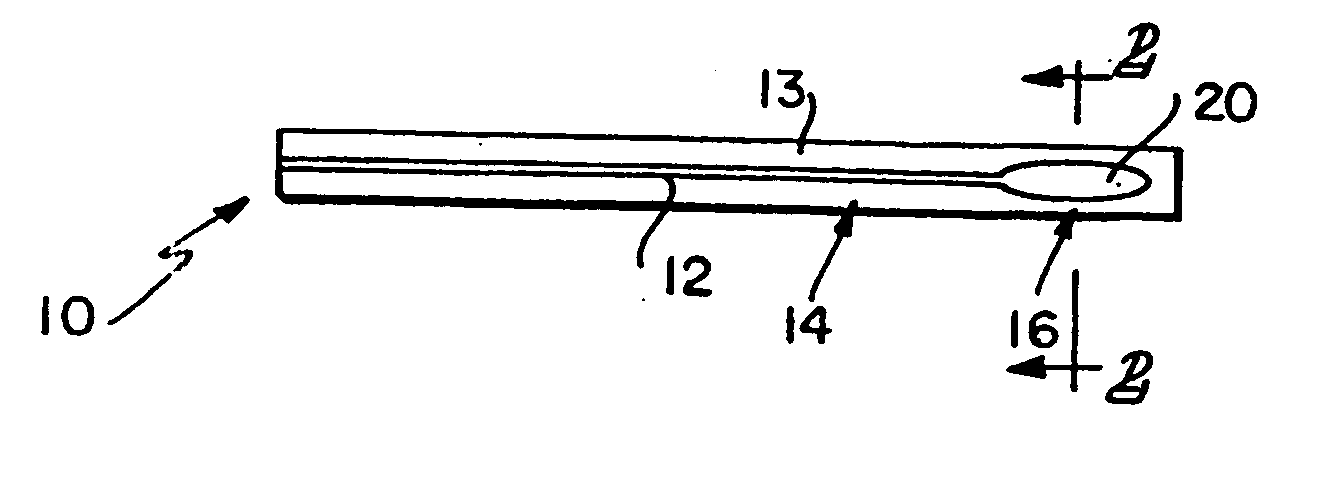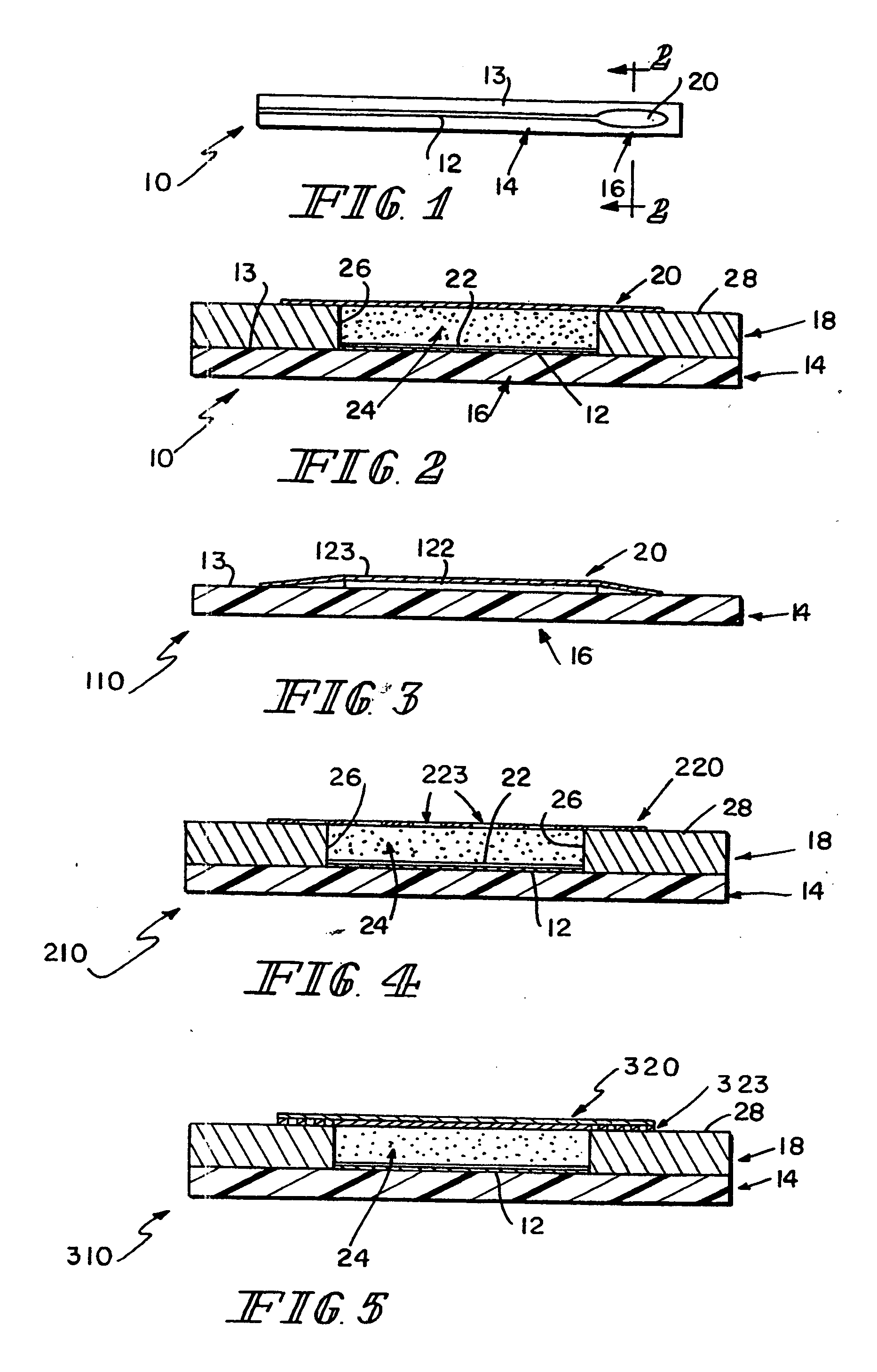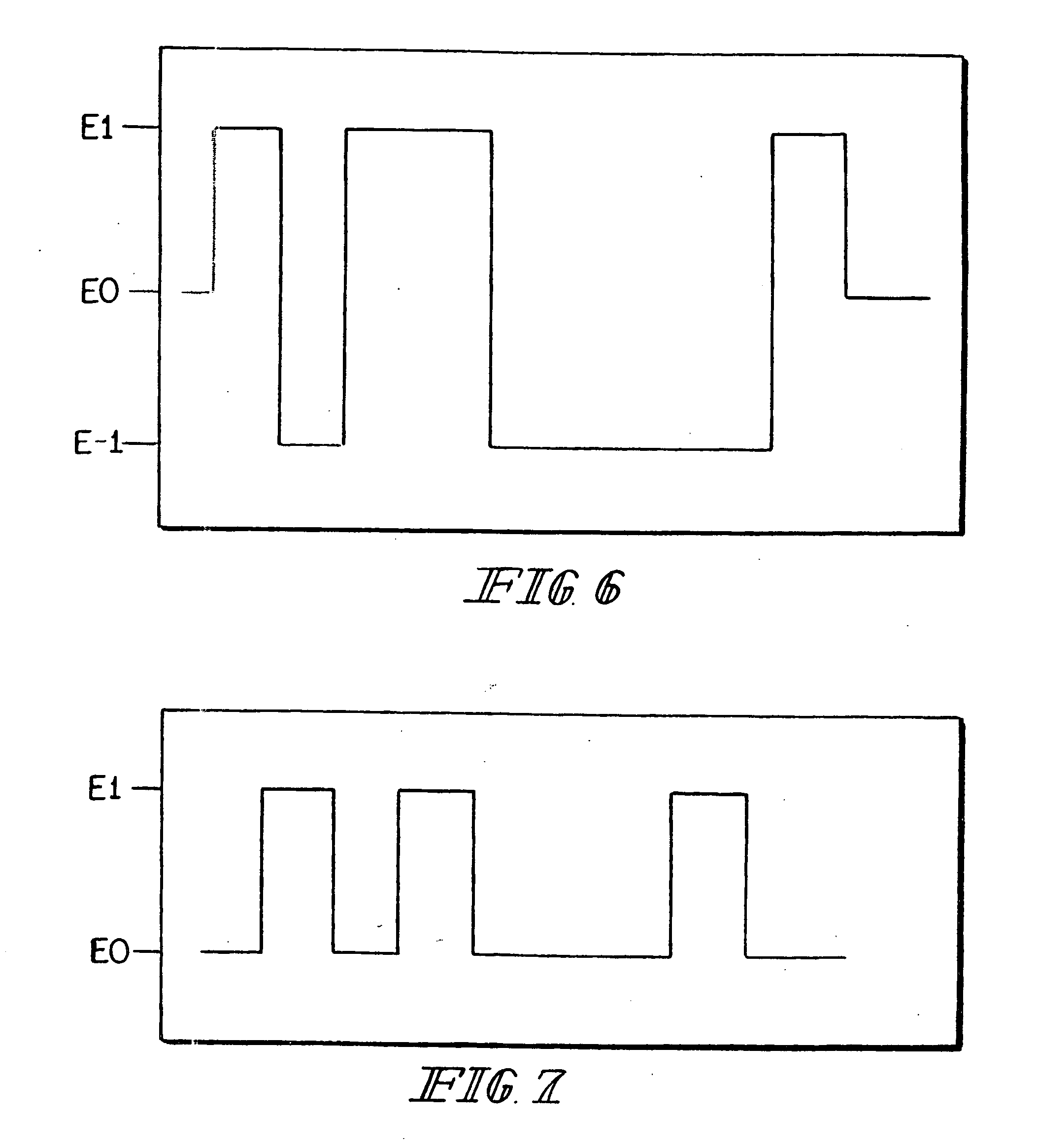Electrochemical sensor and method for continuous analyte monitoring
- Summary
- Abstract
- Description
- Claims
- Application Information
AI Technical Summary
Benefits of technology
Problems solved by technology
Method used
Image
Examples
example 1
[0052] A sensor in accordance with the present invention is formed similarly to sensor 10 of FIGS. 1-2, except that it does not include membrane 20. The enzyme and electron mediator is entrapped in a polymer matrix on the electrode. This polymer matrix was prepared by electropolymerization of pyrrole and pyrrole-mediator derivatives. This method entrapped the enzyme in a polymer matrix on the electrode, and, by incorporating mediator-derivatized pyrrole into the polymer, provided for an immobilized mediator for transfer of electrons within the sensor.
[0053] Platinum disc electrodes were suitable for preparing sensors in accordance with this method. A mediator which was suitable for copolymerization in a matrix was be prepared by the following reaction sequence:
Synthesis of Pyrrole-Modified Osmium (Bisbipyridyl) Pyridinium Chloride
[0054] Pyrrole-modified Osmium (bisbipyridyl) pyridinium Chloride was prepared by the following reaction sequence:
Cleaning Procedure for Platinum E...
example 2
[0071] A sensor 410 consists of conductors 12, 15 and reagents deposited on a flat polymeric substrate 14. Materials for encapsulation of the conductors 12, 15 are provided, and reagents that form a semipermeable biocompatible layer over the reagent-containing sensing area 16. See FIG. 10.
Processes and Materials:
[0072] Substrate: Polyimid (such as Kapton® polyimide film, which is commercially available from E.I. DuPont de Nemours, Wilmington, Del., and Upilex® polimide film which is commercially available from UBE Industries Ltd, Japan) 0.005″ (0.127 mm) thick with gold electrodes and conducting tracks.
[0073] Processing: Material is washed with water, acetone, and methylene chloride, then dried at 180° C. for 20 hours. Material is placed in a vacuum chamber and metalized with 50 Å Chromium followed by 500 Å Gold. Metalized material is removed. A laminated photoresist is applied. The resist is exposed, and developed in an aqueous salt solution. Then the metal pattern is developed...
PUM
| Property | Measurement | Unit |
|---|---|---|
| Concentration | aaaaa | aaaaa |
| Volume | aaaaa | aaaaa |
| Current | aaaaa | aaaaa |
Abstract
Description
Claims
Application Information
 Login to View More
Login to View More - R&D
- Intellectual Property
- Life Sciences
- Materials
- Tech Scout
- Unparalleled Data Quality
- Higher Quality Content
- 60% Fewer Hallucinations
Browse by: Latest US Patents, China's latest patents, Technical Efficacy Thesaurus, Application Domain, Technology Topic, Popular Technical Reports.
© 2025 PatSnap. All rights reserved.Legal|Privacy policy|Modern Slavery Act Transparency Statement|Sitemap|About US| Contact US: help@patsnap.com



